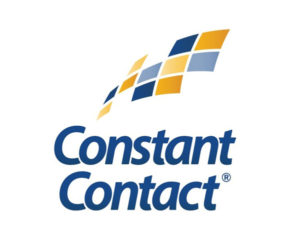Help! Our Nonprofit Is Too Small to Write Emails Consistently
Your Guide to Steady Donor Communication and Fundraising Through Email
Email remains the single best media to frequently communicate with your donors and supporters.
It costs nothing to send them. You can vary the length, content, purpose, and interactive features with relative ease. You can get an idea, create the email, and send it out all in the same day.
Among many other goals, you can use email to:
- ✓ ask for money
- ✓ share stories and updates
- ✓ invite them to events
- ✓ send out polls and surveys
- ✓ ask them to sign petitions
- ✓ offer free resources
- ✓ ask for volunteers
- ✓ do so much more
The list of ways to use your email to strengthen your nonprofit and keep donors engaged could occupy multiple books.
Low cost. Multi-purpose. Speed. Nothing beats email by any of these standards.
Email Beats Social Media
You might be wondering about social media. Isn’t that low cost, multi-purpose, and fast too? Yes, but it also has several weaknesses. The chief shortcoming of social media is that you don’t have a captive audience. People see your posts at the same time as other posts, images, ads, and videos from everyone else. You have to ‘stand out’ from all that noise.
But email – once the person opens it – is relatively undistracted.
With all this in mind, hopefully you know you should be sending out emails regularly. Keeping your supporters and donors engaged, active, and informed is critical to building a base of donors and supporters.
But it’s hard to keep up. Especially for small nonprofits.
Keeping Up with So Many Tasks Is Hard

Image by PublicDomainPictures from Pixabay
I get it. I have worked with a number of small (some VERY small) nonprofits. I know how much there is to do and how little time there is to do it. A lot of small nonprofits are ‘one-person shows.’ You have to do everything.
It’s easy to get overwhelmed. Easy to put things off. Easy to do the stuff you might find more fun, or that utilizes your own personal strengths more effectively.
So email gets neglected. And then, four months go by and you realize you haven’t sent a single email to your list.
Whoops.
Created for small nonprofits in particular, or larger ones that are still neglecting email (you know who you are), here is a guide to help you write emails consistently.
Small Nonprofit Guide to Writing Emails Consistently
This is as much about time management as it is committing to email. When you manage your time better, you will find room in your schedule to keep up with email. Easy to say; hard to do. But hopefully this guide helps.
1. Make Your Commitment – 1 Email per Month
Don’t set a goal that’s far beyond your norm. If you aren’t sending emails out more than a couple times a year, don’t commit to doing one per week. Start with one per month.
I consider one email per month a minimum if you want to nurture your donor base and get them more involved and excited about being part of your mission.
2. Schedule the DAY and TIME Each Month You Will Work on Next Month’s Email
You do this in advance. You put it on your schedule.
For instance, the third Thursday of the month at 9am, you’re going to write next month’s email. If it takes you two hours to write, edit, and post your email in your email delivery platform (such as Constant Contact), then block out from 9-11am.
And you don’t budge this. It is a rock in your schedule.
If someone asks to meet during that time, you’re not available. If your board gives you an urgent task to do that day, you tell them hopefully you can get it done by day’s end, but you already have something from nine to eleven. If you go on vacation or attend a conference on that day, you get the email written before you leave. Your email has now become your urgent item, and you bump other stuff out to get it done.
Pick the day. Stick to the day. Let nothing interfere with the day.
3. Always Be Collecting
This is the ABC of email writing. Besides finding the time, the second hardest thing about email is – what do you write about?
You should always be collecting content so you have a bank to pull from on email day. These can be impact stores, volunteer updates, events, unmet needs, data that resonates, survey questions. Look at the start of this article again at the bullet list of things you can do with email. Those are your content ideas.
You should never sit down to write an email and have no idea what to say. If that happens, now you know your number one task from this point forward. Start collecting and storing content for future use.
Bonus benefit – if you do this, is will make many other parts of your work easier too. You can never have too many content ideas.
4. Know Your Upcoming Events Well In Advance
Events are unique. Most events require months of planning. What that means is, you know the date well in advance. You should be writing emails about any live events well in advance of when they happen. Too many nonprofits just send one single email about very important events, and oftentimes just a couple weeks (or days!) before it happens.
Months.
You should be talking about fundraising events months in advance. And then say it again in subsequent emails. Make your event the whole topic of some emails. Put it in the P.S. in others. Mention it in passing in others. Or do a whole campaign for it if the event is important enough.
Even for smaller events like recurring donor special gatherings or volunteer thank you parties, people need to know well in advance.
5. Plan at Least One Fundraising Campaign per Year
This could be Giving Tuesday. It could be the end of the year. It could be at another time of the year that makes sense for your organization. But plan at least one email fundraising campaign per year.
What’s a campaign? It’s a series of email built around a specific call to action or fundraising goal.
How long should a campaign be? It’s pretty tough to do much with just one email. I’d consider three an absolute minimum. Five or seven or twelve is better. Being a small nonprofit, figure out what you can accomplish and plan for it.
Here’s the top secret to writing email fundraising campaigns fast: Write the whole campaign in one sitting.
You’ll need to plan a different block in your schedule for this. This is not your monthly email. But if it takes you two hours to write one email, it will not take you ten hours to a write a five-email campaign. The campaign will have a continuous narrative. You’ll repeat some parts, such as the call to action. And, by focusing on one task for an extended period of time, you’ll just be able to do it faster. That’s how our brains work.
An hour of focused work is ten times more productive than six ten-minute chunks of time with interruptions between each. This is why I don’t use a cell phone. Checking your phone is an interruption. Checking social media is an interruption. Playing games and doing puzzles in an interruption. Don’t do it. Bury yourself in the campaign until the first draft of all the emails is done. Then, take a break. Come back to it an hour later. Re-read, revise, and finalize it.
You should be able to write and finalize a five-email campaign in one workday.
To succeed at this, you will need your content in hand before you start. You will need to prepare for your email writing marathon day.
6. Use an Easy Email Provider
 My provider of choice for small nonprofits is Constant Contact.
My provider of choice for small nonprofits is Constant Contact.
I have used Mailchimp, Get Response, Drip, Active Campaign, and others. Constant Contact is the easiest to use and has the shortest learning curve. It also has the best customer service (including live phone help – that alone puts it at the top of the list for me…). It doesn’t over-clutter you with logic trees and confusing terminology. Segmenting lists is super easy.
I mean, if you compare Constant Contact’s list segmenting process to Mailchimp’s, it’s like ordering a pizza over the phone compared to driving to the restaurant and then having to make the pizza yourself. From scratch. It’s way, way easier.
As a small nonprofit, you don’t need an email platform that does everything. You need one that is easy and fast to use and provides the services and data that will help you grow.
Best of all, they have a nonprofit discount.
You can sign up for a 60-day free trial of Constant Contact here
7. Get Help from an Email Fundraising Copywriter
If you implement the first six steps in this guide, you will be pleased with the results. Your engagement will go up. You’ll find new donors. And, you might decide to increase your email communications to two per month.
But, the more you do, the more time it takes. If you want to write more emails to your donors and supporters, feel free to reach out to ProActive Content for help. Email fundraising is one of our most requested services, and our results speak for themselves.
Is Your Nonprofit too Small to Afford an Email Copywriter?
You’d be surprised how affordable it is. If you’re asking your copywriter to write one email per month, this is a very minor cost out of your budget. And, you will make back the investment as donations through email increase.
Another way to use an email copywriter is to hire us to write your campaign, while you focus on your monthly emails. Again, this is a minimal investment.
And because ProActive Content likes working with small, overworked nonprofits, we offer a small nonprofit discounted rate.
Want more content? Get weekly nonprofit fundraising and copywriting tips, strategies, and motivations in the ProActive Insights newsletter.




